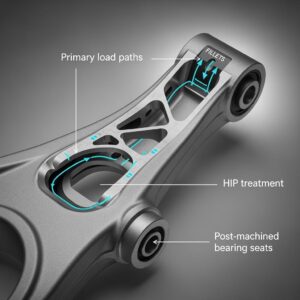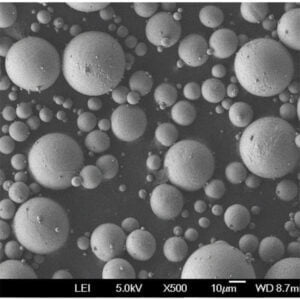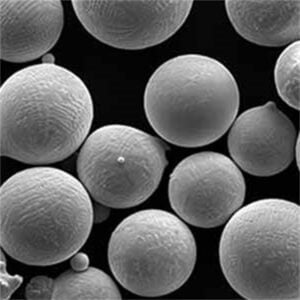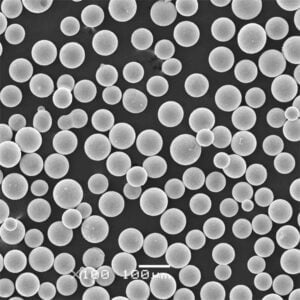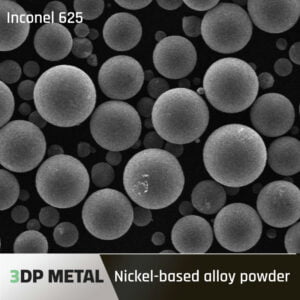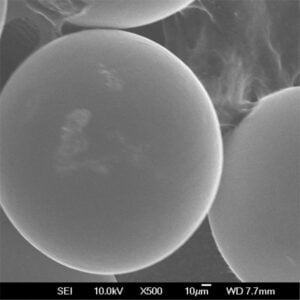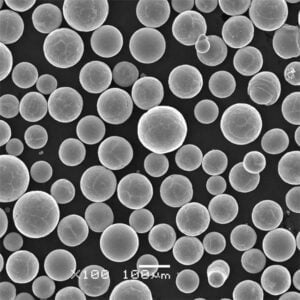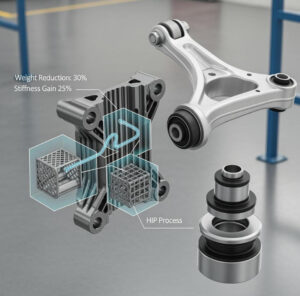ニッケルパウダー:サプライヤー、種類と特性
目次
ニッケル粉 は、金属元素であるニッケルを細かく分割し、粒子状にしたものです。この銀白色の素材は、その卓越した特性と多用途性により、様々な業界の注目を集めています。この記事では、ニッケルパウダーの世界を掘り下げ、その組成、特徴、用途など、この注目すべき素材について知っておくべきことをご紹介します。
ニッケルパウダーの概要
ニッケル粉末は、多くの工業プロセスや製品の基本成分です。耐食性、高温強度、優れた電気的・磁気的特性で有名です。エレクトロニクスから化学処理、航空宇宙、自動車に至るまで、ニッケル粉末は様々な分野で重要な役割を果たしています。
ニッケル粉末の組成と種類
| タイプ | 構成 | 特徴 |
|---|---|---|
| カルボニルニッケル粉 | ニッケルカルボニル法で得られた純ニッケル | 高純度、球状粒子、優れた流動性 |
| 電解ニッケル粉 | 電解析出法による純ニッケル | 不規則な形状の粒子、高い表面積 |
| 不活性ガスアトマイズニッケル粉 | 不活性ガス中でアトマイズしたニッケル合金 | 球状粒子、制御された粒度分布 |
| 水アトマイズニッケル粉 | ニッケル合金の水中噴霧 | 焼結に適した不規則な粒子形状 |
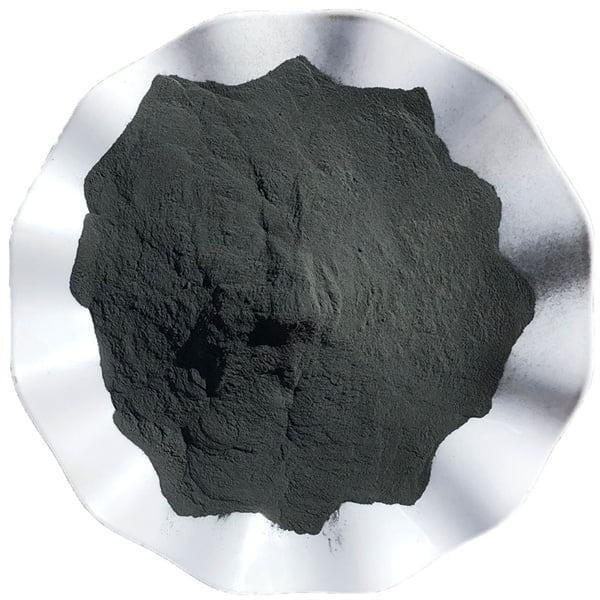
の性質 ニッケルパウダー
| プロパティ | 特徴 |
|---|---|
| カラー | シルバーグレー |
| 密度 | 8.9 g/cm³ |
| 融点 | 1455度C(2651度F) |
| 熱伝導率 | 90.7 W/(m-K) |
| 電気抵抗率 | 6.99 × 10^-8 Ω-m |
| 磁気特性 | 強磁性 |
ニッケル粉末の用途
| 申し込み | 説明 |
|---|---|
| エレクトロニクスとバッテリー | ニッケルカドミウムおよびニッケル水素電池、導電性コーティング、電子部品に使用される。 |
| 触媒 | 水素化や水蒸気改質など、さまざまな化学プロセスで触媒として使用される。 |
| 電気めっき | ニッケル電気メッキによる耐食性と装飾仕上げ |
| 粉末冶金 | ニッケル粉末は、高強度で耐摩耗性のある部品の製造に使用される。 |
| 溶接とろう付け | ニッケル粉末は、溶接およびろう付け合金の主要成分である。 |
| 磁性材料 | 永久磁石や磁気記録媒体の製造に利用される |
仕様とグレード ニッケルパウダー
| グレード | 粒子径 | 純度 | アプリケーション |
|---|---|---|---|
| ASTM B438 タイプI | 3-7 μm | 99.8%分 | 電池、触媒、エレクトロニクス |
| ASTM B438 タイプII | 3-7 μm | 99.5%分 | 粉末冶金、コーティング |
| ASTM B438 タイプIII | 7-15 μm | 99.5%分 | 粉末冶金、コーティング |
| ASTM B438 タイプIV | >15 μm | 99.5%分 | 粉末冶金、コーティング |
ニッケルパウダーのサプライヤーと価格
| サプライヤー | 価格帯(米ドル/kg) | グレード |
|---|---|---|
| ノリリスク・ニッケル | $20 – $30 | カルボニル、電解 |
| ヴェール | $18 – $25 | カルボニル、不活性ガスアトマイズ |
| 住友金属鉱山 | $22 – $28 | カルボニル、水アトマイズ |
| グレンコア | $19 – $27 | カルボニル、電解 |
| BHPビリトン | $21 – $29 | カルボニル、不活性ガスアトマイズ |
ニッケルパウダーの長所と短所
| 長所 | 短所 |
|---|---|
| 優れた耐食性 | 健康および環境への潜在的懸念 |
| 高温強度 | 代替品に比べ比較的高価 |
| 多彩なアプリケーション | 特定の化学環境に敏感 |
| 磁気特性 | – |
| 電気伝導度 | – |
ニッケル粉に関しては、長所が短所を上回ることが多く、様々な産業で高い需要があります。しかし、ニッケル粉の取り扱いや廃棄には注意が必要です。 ニッケルパウダー 責任を持って、安全および環境規制を遵守する。
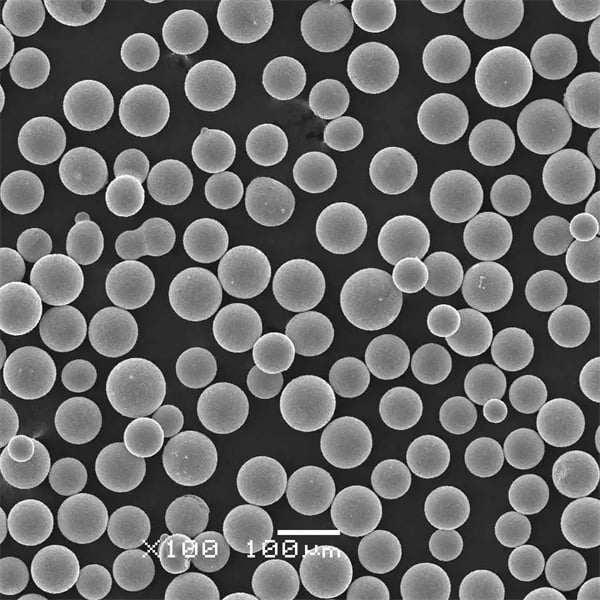
よくあるご質問
| 質問 | 答え |
|---|---|
| カルボニルニッケル粉と電解ニッケル粉の違いは何ですか? | カルボニルニッケル粉末は化学プロセスで製造され、球状の粒子形状を持つが、電解ニッケル粉末は電解析出法で得られ、不規則な粒子形状を持つ。カルボニルニッケル粉末は一般的に純度が高く、流動特性が優れている。 |
| ニッケル粉はどのように電池に使われるのですか? | ニッケル粉末は、ニッケルカドミウム(Ni-Cd)およびニッケル水素(Ni-MH)二次電池の主要成分であり、正極材料としての役割を果たす。 |
| 粉末冶金でニッケル粉末を使う利点は何ですか? | ニッケル粉末は、焼結部品に優れた機械的特性、耐食性、耐摩耗性を与えます。高性能部品を製造するために、他の金属粉末と組み合わせて使用されることが多い。 |
| ニッケルパウダーに関する健康上の懸念はありますか? | ニッケル化合物は、人によっては皮膚刺激や呼吸器系 の問題を引き起こす可能性があります。ニッケル粉を取り扱う際は、適切な取り扱いと安 全対策を行う必要があります。 |
| ニッケル粉末の粒径は、その用途にどのような影響を与えるのでしょうか? | 一般的に粒子径が小さいほど表面積と反応性が高く、触媒や電気化学プロセスなどの用途に適している。粉末冶金やコーティングには、より大きな粒子径が好まれる。 |
結論として、ニッケル粉末は、幅広い産業で応用され ている注目すべき素材です。電子機器や電池から触媒や粉末冶金に至るまで、この万 能な材料は私たちを取り巻く世界を形成し続けています。技術の進歩に伴い、ニッケルパウダーの 需要は拡大し、さらなる技術革新と可能性の追求が 推進されるでしょう。
Frequently Asked Questions (Advanced)
1) What impurity and morphology specs matter most when selecting Nickel Powder for batteries vs. powder metallurgy?
- Batteries: prioritize carbonyl nickel powder with high purity (≥99.8%), low S (≤10–50 ppm), low Fe/Co/Cu impurities, and D50 ~3–7 µm for high surface area. Powder metallurgy: inert gas atomized powders with controlled PSD (typically 10–45 µm or 20–63 µm), spherical shape for flow, and oxygen <0.15 wt% to limit oxide inclusions.
2) How does particle size distribution (PSD) influence sintered density and conductivity in Ni-based parts?
- Narrow PSD with sufficient fines improves packing and green density, enabling higher sintered density and conductivity. Excess fines increase oxide and reduce flow; too coarse reduces green strength. Target Hausner ratio ≤1.25 and Hall flow <40 s/50 g where applicable.
3) Is Nickel Powder suitable for additive manufacturing (AM)?
- Yes. Gas-atomized Nickel Powder and Ni alloys (e.g., Inconel, NiCr) are used in LPBF/DED. Key specs: spherical morphology, PSD aligned to process (15–45 µm for LPBF; 45–106 µm for DED), oxygen typically <0.08–0.12 wt% for consistent melt behavior.
4) What are best practices for safe handling and exposure control?
- Follow NFPA 484 for combustible metals; use grounded equipment, local exhaust ventilation (LEV), and HEPA filtration. For health, follow OSHA/ACGIH limits (e.g., ACGIH TLV-Ni metal inhalable 1 mg/m³; lower for soluble compounds). Implement Dust Hazard Analysis (DHA), anti-static PPE, and segregated storage.
5) How do carbonyl vs. electrolytic Nickel Powder compare for catalytic applications?
- Carbonyl nickel often exhibits higher purity, controlled surface chemistry, and uniform small particle size, yielding higher catalytic activity and reproducibility. Electrolytic nickel’s higher surface area can be beneficial but requires tighter impurity control and pre-treatment to remove surface oxides.
2025 Industry Trends
- Battery and hydrogen economy pull: Rising demand from Ni-based battery chemistries (NiMH, alkaline) and hydrogenation catalysts; increased scrutiny on impurity profiles and ESG reporting.
- Supply diversification: More atomization capacity outside traditional regions to reduce geopolitical risk; recycled Ni streams integrated with certified traceability.
- AM-ready nickel: Growth in gas-atomized Ni alloy powders for LPBF/DED with tighter oxygen specs and digital powder passports per ISO/ASTM 52907.
- EHS tightening: Stricter workplace exposure monitoring for nickel compounds; broader adoption of DHA, LEV performance testing, and medical surveillance.
- Price stabilization strategies: Producers deploy hedging and long-term offtake with automotive and energy sectors to mitigate volatility.
2025 Snapshot: Nickel Powder Market and Quality Metrics
| メートル | 2023 Baseline | 2025 Estimate | Notes/Source |
|---|---|---|---|
| Carbonyl Ni typical purity (%) | 99.5–99.8 | 99.7–99.9 | Tighter impurity control in carbonyl process |
| Oxygen content, gas-atomized Ni alloys (wt%) | 0.10–0.18 | 0.07–0.12 | Improved atomization + handling |
| Share of AM-grade Ni powders with digital passports | 15–25% | 40–60% | Adoption in aerospace/energy |
| Spot price volatility (std. dev. YoY, %) | 高い | 中程度 | Hedging, long-term contracts |
| Recycled content in Ni powder supply (%) | 15-30 | 25~45歳 | ESG targets, certified streams |
Selected references:
- ISO/ASTM 52907 (metal powder quality for AM); ASTM B438 (nickel powder for PM) — https://www.iso.org | https://www.astm.org
- NFPA 484: Combustible Metals — https://www.nfpa.org
- ACGIH TLVs/OSHA guidance on nickel exposure — https://www.osha.gov
Latest Research Cases
Case Study 1: Carbonyl Nickel Powder Optimization for High-Loading Catalysts (2025)
- Background: A chemicals producer sought higher hydrogenation throughput without increasing reactor size.
- Solution: Specified carbonyl Nickel Powder with D50 4–6 µm, sulfur <20 ppm, and controlled passivation; implemented in-line particle classification and inert packaging.
- Results: Catalyst activity +12–15% vs. prior lot; deactivation rate reduced 10%; batch-to-batch variability halved (RSD of activity from 6.2% to 3.1%).
Case Study 2: AM-Grade Gas-Atomized Nickel Alloy Powder for LPBF Turbomachinery Seals (2024)
- Background: An energy OEM needed consistent build quality on thin-wall Ni-alloy seals.
- Solution: Switched to inert gas-atomized NiCr-based powder with O = 0.08–0.10 wt%, PSD 15–45 µm, digital powder passport; tuned scan strategies and contour remelts.
- Results: Relative density 99.92% average; CT-detected defect rate −35%; fatigue life at 10^7 cycles +22% after shot peening; scrap rate −18%.
専門家の意見
- Prof. Randall M. German, Powder Metallurgy Expert
- Viewpoint: “Gas-to-metal ratio and PSD control are decisive for nickel powder consistency—flow and packing dictate sintered performance more than many realize.”
- Dr. Christina Noguez, Senior Scientist, Fraunhofer IFAM
- Viewpoint: “For AM, oxygen management from atomization through handling is the gating factor; trace O swings can double lack-of-fusion defects in nickel alloys.”
- James Sears, VP Technology, Carpenter Additive
- Viewpoint: “Digital material passports linking powder genealogy to in-process data are quickly becoming standard for nickel powders in regulated industries.”
Practical Tools/Resources
- Standards and QA
- ASTM B438 (nickel powders for PM), ISO/ASTM 52907 (AM powder quality), ASTM E2491 (laser diffraction PSD) — https://www.astm.org | https://www.iso.org
- Safety and compliance
- NFPA 484 for combustible metals; OSHA/ACGIH exposure limits and controls — https://www.nfpa.org | https://www.osha.gov
- Data and handbooks
- ASM Handbook Vol. 7 (Powder Metallurgy), Vol. 24 (Additive Manufacturing) — https://www.asminternational.org
- Testing and characterization
- Hall/Carney flow (ASTM B213/B821), apparent/tap density (ASTM B212/B527), oxygen/nitrogen by inert gas fusion
- AM ecosystem
- NIST AM Bench datasets; OEM LPBF parameter guides for Ni alloys — https://www.nist.gov
Last updated: 2025-10-17
Changelog: Added advanced FAQ tailored to batteries, PM, and AM; 2025 trend snapshot with market/quality KPIs; two recent case studies (catalyst optimization; AM turbomachinery seals); expert viewpoints; and curated standards/safety/resources links
Next review date & triggers: 2026-04-30 or earlier if ISO/ASTM standards for nickel powders are revised, workplace exposure limits change, or AM datasets show ≥25% defect reduction via new oxygen control methods
シェアする
MET3DP Technology Co., LTDは、中国青島に本社を置く積層造形ソリューションのリーディングプロバイダーです。弊社は3Dプリンティング装置と工業用途の高性能金属粉末を専門としています。
関連記事
